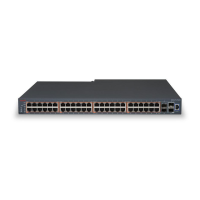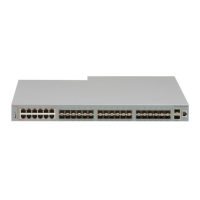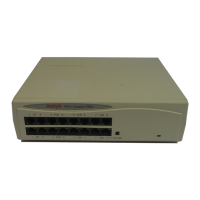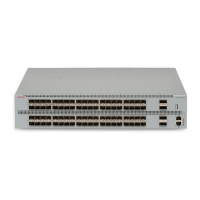Port LED state indicators
This section describes the port LED state indicators by color and fluctuation cues.
The following list describes the three port LEDs:
• Activity indicates the level of activity on the link.
• Link indicates the presence of an Ethernet link.
• Speed indicates the port speed (for example, 10 Mb/s, 100 Mb/s, 1000 Mb/s).
Table 17: RJ-45 Port LED state indicators
Label Color and Status Description
Speed/PoE Green, Pulse Green—
Green
The port is set to operate at 1000 Mb/s and PoE is delivered on
the PoE model port.
Green, Steady The port is set to operate at 1000 Mb/s and no PoE power is
delivered on the port, on non-PoE or PoE models without a
PoE consumer attached to the port.
Amber, Pulse Amber—
Amber
The port is set to operate at 100 Mb/s and PoE is delivered on
the PoE model ports.
Amber, Steady The port is set to operate at 1000 Mb/s and no PoE power is
delivered on non-PoE switch ports or PoE switches without a
PoE consumer attached to the port.
Amber, Green Pulse The port is experiencing a PoE error.
Off When the Link/Activity LED is green and the Speed LED is off,
the port is set to operate at 10 Mb/s.
Link / Activity Green, Steady The link established but no data activity exists.
Green, Blink The link is established and data activity exists (the blink rate
indicates the level of activity).
Green, Slow Blink The software disabled the port.
Amber, Steady Port not used.
Amber, Blink Not applicable.
Off The port has no link or activity.
Table 18: SFP transceiver Port LED state indicators
Label Color and Status Description
In Use Green, Blink Not applicable.
Green, Steady The SFP port and the transmit port are active.
Amber, Blink Not applicable.
Amber, Steady SFP Installed—TX Port Inactive
Table continues…
Checking Light Emitting Diode on the switch
February 2016 Installing Avaya Ethernet Routing Switch 4900 Series 51
Comments on this document? infodev@avaya.com

